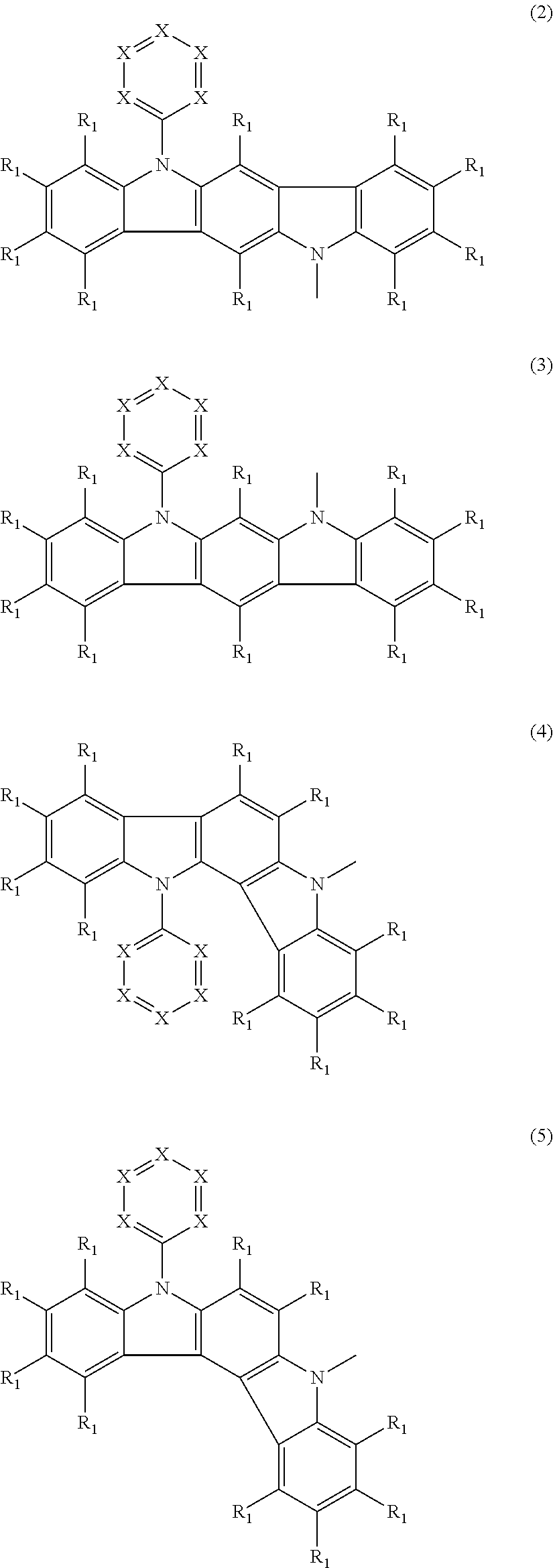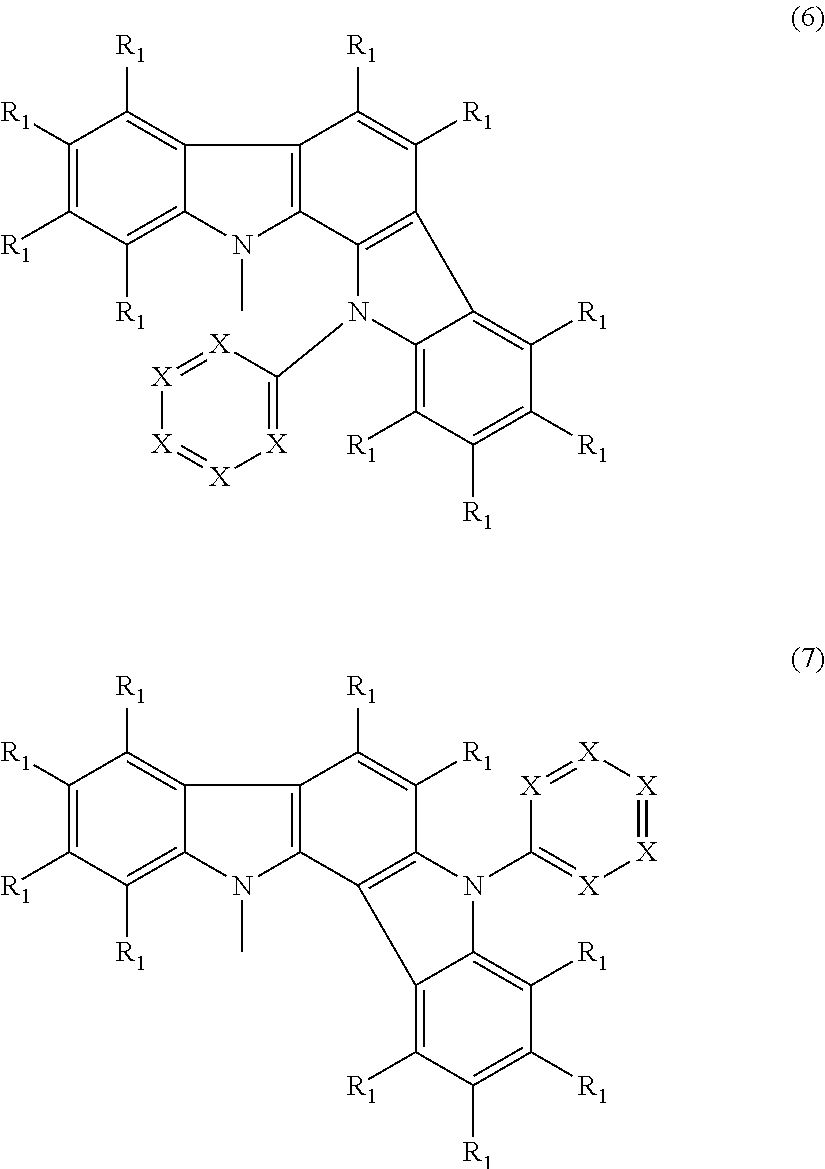Polymer for organic electroluminescent element, and organic electroluminescent element using the same
- Summary
- Abstract
- Description
- Claims
- Application Information
AI Technical Summary
Benefits of technology
Problems solved by technology
Method used
Image
Examples
example 1
[0088]A compound (A-2) is synthesized from a compound (A-1), and then a polymer (P-1) is synthesized, according to a scheme (13).
[0089]In a nitrogen atmosphere, 30.0 g of 1,2-dichloroethane were added to 2.00 g (6.02 mmol) of the compound (A-1) in a 100-ml recovery flask, and the mixture was stirred at a bath temperature of 50° C. 0.76 g (2.36 mmol) of tetrabutylammonium bromide, 17.56 g (314 mmol) of potassium hydroxide, and 15.8 g (114 mmol) of potassium carbonate were fed in four portions with stirring at a bath temperature of 50° C. for 101 hours. The mixture was cooled to room temperature, and solid matter was separated by filtration. The resultant filtrate was distilled off under reduced pressure. The residue was purified by silica gel column chromatography, to thereby obtain 1.93 g (yield 81%) of a compound (B-1) as white powder.
[0090]Subsequently, in a nitrogen atmosphere, 2.59 g (6.56 mmol) of the compound (B-1), 125.0 g of isopropyl alcohol, 50.0 g of tetrahydrofuran (THF)...
example 2
[0095]An element including the polymer (P-1) obtained in Example 1 was evaluated. First, a film of poly(3,4-ethylenedioxythiophene) / polystyrene sulfonic acid (PEDOT / PSS): (manufactured by H.C. Starck, product name: Clevios PCH8000) was formed as a hole injection layer at a thickness of 25 nm on a glass substrate with ITO having a thickness of 150 nm, which had been washed with a solvent and treated by UV and ozone. Next, the synthesized polymer (P-1) was dissolved in THF to prepare a 0.4 wt % solution, and a film having a thickness of 20 nm was formed as a hole transport layer by a spin coating method. Next, a film of a light emission layer having a thickness of 40 nm was formed by co-evaporation using tris(2-(p-tolyl)pyridine)iridium(III) as a light emission layer dopant and using 4,4′-bis(9H-carbazol-9-yl)biphenyl as a light emission layer host by a vacuum deposition apparatus at a dopant concentration of 0.6 wt %. After that, a film of tris(8-hydroxyquinolinato)aluminum (Alq3) ha...
example 3
[0097]The polymer (P-2) was obtained in the same manner as in Example 1 except that the amount of AIBN used as an initiator was changed to 0.12 g, and the amount of benzene used as a solvent was changed to 15 ml in polymerization of the compound (A-2). The polymer was found to have an Mw of 20,000 and a molecular weight distribution of 2.2. In addition, the polymer was found to have a Tg of 214° C. The element was evaluated in the same manner as in Example 2.
PUM
| Property | Measurement | Unit |
|---|---|---|
| Substance count | aaaaa | aaaaa |
| Temperature | aaaaa | aaaaa |
| Temperature | aaaaa | aaaaa |
Abstract
Description
Claims
Application Information
 Login to View More
Login to View More - R&D
- Intellectual Property
- Life Sciences
- Materials
- Tech Scout
- Unparalleled Data Quality
- Higher Quality Content
- 60% Fewer Hallucinations
Browse by: Latest US Patents, China's latest patents, Technical Efficacy Thesaurus, Application Domain, Technology Topic, Popular Technical Reports.
© 2025 PatSnap. All rights reserved.Legal|Privacy policy|Modern Slavery Act Transparency Statement|Sitemap|About US| Contact US: help@patsnap.com



